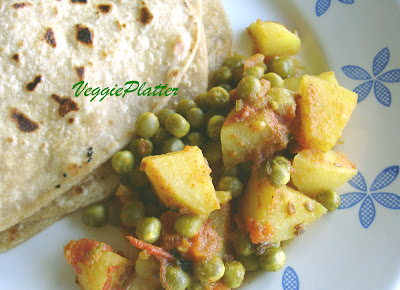As all good things in life, Nupur's A-Z Indian vegetable series is also coming to an end. I wish there had been more letters in the English alphabet. I have been a vegetarian all my life and so, this event became my 'favorite' one. Sending recipes every week, was like a self made commitment, though initially planned things were never executed. Planned 'V' entry vangibhath became vergodalas dal, 'S' for saagu became spinach rice and in a similar fashion, majority of the planned things became different and something else depending upon my time and availability of ingredients. Still I managed to get acquainted with some 'new' veggies in the process.
For the final letter 'Z' of the series, 'Zimikand Halwa' & 'Zucchini - Tomato Pappu' are my entries.
Thank you Nupur for such a wonderful event, which I really enjoyed. You ARE a gracious hostess. :)

Zimikand Halwa Zucchini - Tomato Pappu------------------------------------------------------------------------------------------------Zimikand Halwa
Zucchini - Tomato Pappu------------------------------------------------------------------------------------------------Zimikand HalwaI had a feeling that I could not pull off a dry zunka and it was planned that zucchini would come into picture only if I could not find any other 'Z' alternatives. When I was going through the hindi words for veggies, I came across 'Zimikand'. After some web surfing, I concluded that it has to be suran or ratalu, the purple yams.
I must admit, I have never encountered these 'Indian Yams' in and around the region, I grew up. I therefore went yesterday and bought two bags of frozen ratalu. The picture on the bag had beautiful purple discs of chopped ratalu. When I opened them, it was a sheer disappointment. Half of them were brown rotten things. I had to throw more than half of them into the garbage. The remaining purple things were enough to cheer me up. I would like to see some real fresh stuff in the future and enjoy it in it's true form.
Somehow, I did not wish to see the purple hue lost to some spices and other veggies added in the dish. Unlike some colorful root vegetables, these yams were on the bland side. Still, their rich color tempted me to try a sweet dish. I thawed them for a while, grated them, added milk and sugar, cooked it and ended up with a yummy dessert. I have a hunch that probably the halwa would be rich purple in color, if I had access to the fresh stuff.
Coming to this lilac colored dessert, it was just heavenly. Unlike carrots & lauki, this vegetable almost becomes a mush when cooked and will have a melt in your mouth kind of creaminess to it. If you have ratalu available at a grocery store near you, I would recommend you to try this dish. I was so glad that I did not try to cook it into one more sabji. I am so excited with this new found veggie and am looking forward to try some more desserts with it. Ingredients:
Grated zimikand - 1 cup
Milk - less than 1/2 cup
Sugar - 1/2 cup
Ghee - 2 Tbsp
Cardamom powder - 1/4 tsp
Cooking part: Add grated zimikand, milk, sugar and ghee to a pan and cook on low flame. The mixture tends to get a little sticky at the initial stages but keep stirring in between. When the mixture turns to almost halwa consistency, add cardamom powder and mix well. Cook for a couple of minutes more and turn off the stove. Refrigerate for a couple of hours and serve.
------------------------------------------------------------------------------------------------
Zucchini - Tomato Pappu (Dal)I could not resist the fresh zucchinis at the grocery store and brought some. I made delicious, dal adding some tomatoes along with it today. 
Ingredients:
Toor dal - 1 Cup
Zucchini - Peeled, ends cut and chopped into medium sized cubes - 1 Cup
Small sized tomatoes - 2
2 Serrano peppers (or green chillies), vertically slit into 4 pieces
Turmeric powder - 1/2 tsp
Tamarind extract - 1/4 cup
Chilli powder - 2 to 2 & 1/2 tsp
Salt -2 & 1/2 tsp
For tadka / seasoning, you need:
Oil - 1 tsp
Cumin seeds - 1 tsp
Mustard seeds - 1 tsp
A few pinches of asafoetida
Few curry leaves
Cooking pappu:
Cook toordal with tomatoes (whole), green chillies, turmeric powder adding 2 cups of water in a pressure cooker until you hear one or two whistles.
Mean while, cook the zucchini with a little amount of water in a MW. Let it be cooked till tender, (not turning them into a mush).
When the valve pressure is gone, remove the cooker's lid. Mash the tomatoes well along with the dal and add cooked zucchini, tamarind extract, chilli powder, salt to the dal mixture.
Turn on the stove and let the dal simmer on low - medium flame for about five minutes.
Heat oil in a small pan and add mustard seeds, cumin seeds, asafoetida and curry leaves in that order. When mustard seeds start to pop, turn off the stove and add the mixture to the cooked dal and mix well.
Serve hot with rice and ghee or rotis.

------------------------------------------------------------------------------------------------Previously On A - Z series
D - Daikon Chutney
E - Eggplants, Stuffed
F - French beans & Indian Beans In a Sabji
G - Gajar Ka Kheer
H - Hagalakayi (Bitter gourd) Gojju
I - Idli Upma
I - Imli Ke Paththon Ka Dal
J - Jalapenos – Mirchi Ka Salan
K - Kosumbari
L - Lauki Ka Halwa
M - Mirapakaya – Aloo Koora
N - Nuggekayi Palya
O - Okra dal
P - Patoli
Q - Quick Mango chutney
R - Rajma - Aloo
S - Spinach Rice
T - Tomato Gojju
U - Urlagadda – Menthaku Koora
V - Vergodalas Dal
W - Whole, White Potatoes In Spinach Gravy
X - Xacuti Masala Rice
X - Xacuti, Vegetarian
Y - Yogurt With Snakegourd
Post a comment

































